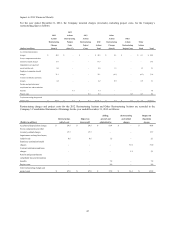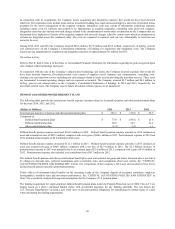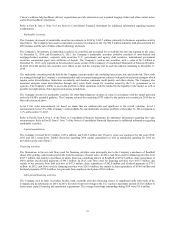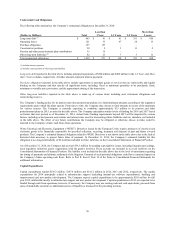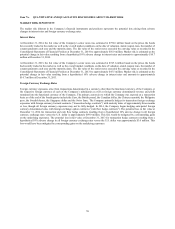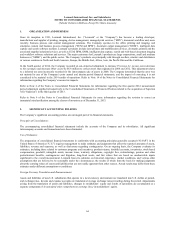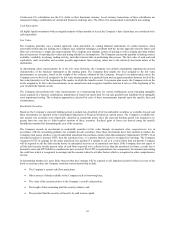Lexmark 2014 Annual Report Download - page 61
Download and view the complete annual report
Please find page 61 of the 2014 Lexmark annual report below. You can navigate through the pages in the report by either clicking on the pages listed below, or by using the keyword search tool below to find specific information within the annual report.EFFECT OF CURRENCY EXCHANGE RATES AND EXCHANGE RATE RISK MANAGEMENT
Revenue derived from international sales, including exports from the U.S., accounts for approximately 57% of the Company’s
consolidated revenue, with EMEA accounting for 37% of worldwide sales. Substantially all foreign subsidiaries maintain their
accounting records in their local currencies. Consequently, period-to-period comparability of results of operations is affected by
fluctuations in currency exchange rates. Certain of the Company’s Latin American and European entities use the U.S. dollar as their
functional currency.
Currency exchange rates had a 1% unfavorable impact on international revenue in 2014 when compared to 2013. Currency exchange
rates had a negligible impact on international revenue in 2013 when compared to 2012. During the fourth quarter of 2014, Lexmark
entered into foreign exchange option contracts as hedges of portions of anticipated foreign currency denominated revenue. The
settlement of these contracts and subsequent recognition in the Company’s Consolidated Statements of Earnings will begin in the first
quarter of 2015 and continue throughout the year as the underlying hedged transactions occur.
The Company’s exposure to exchange rate fluctuations generally cannot be minimized solely through the use of operational hedges.
Therefore, the Company utilizes financial instruments such as forward exchange contracts to reduce the impact of exchange rate
fluctuations on certain assets and liabilities, which arise from transactions denominated in currencies other than the functional
currency. The Company does not purchase currency-related financial instruments for purposes other than exchange rate risk
management.
RECENT ACCOUNTING PRONOUNCEMENTS
Refer to Part II, Item 8, Note 2 of the Notes to Consolidated Financial Statements for a discussion of recent accounting
pronouncements which is incorporated herein by reference. There are no known material changes and trends nor any recognized future
impact of new accounting guidance beyond the disclosures provided in Note 2.
INFLATION
The Company is subject to the effects of changing prices and operates in an industry where product prices are very competitive and
subject to downward price pressures. As a result, future increases in production costs or raw material prices could have an adverse
effect on the Company’s business. In an effort to minimize the impact on earnings of any such increases, the Company must
continually manage its product costs and manufacturing processes. Additionally, monetary assets such as cash, cash equivalents and
marketable securities lose purchasing power during inflationary periods and thus, the Company’s cash and marketable securities
balances could be more susceptible to the effects of increasing inflation.
57


